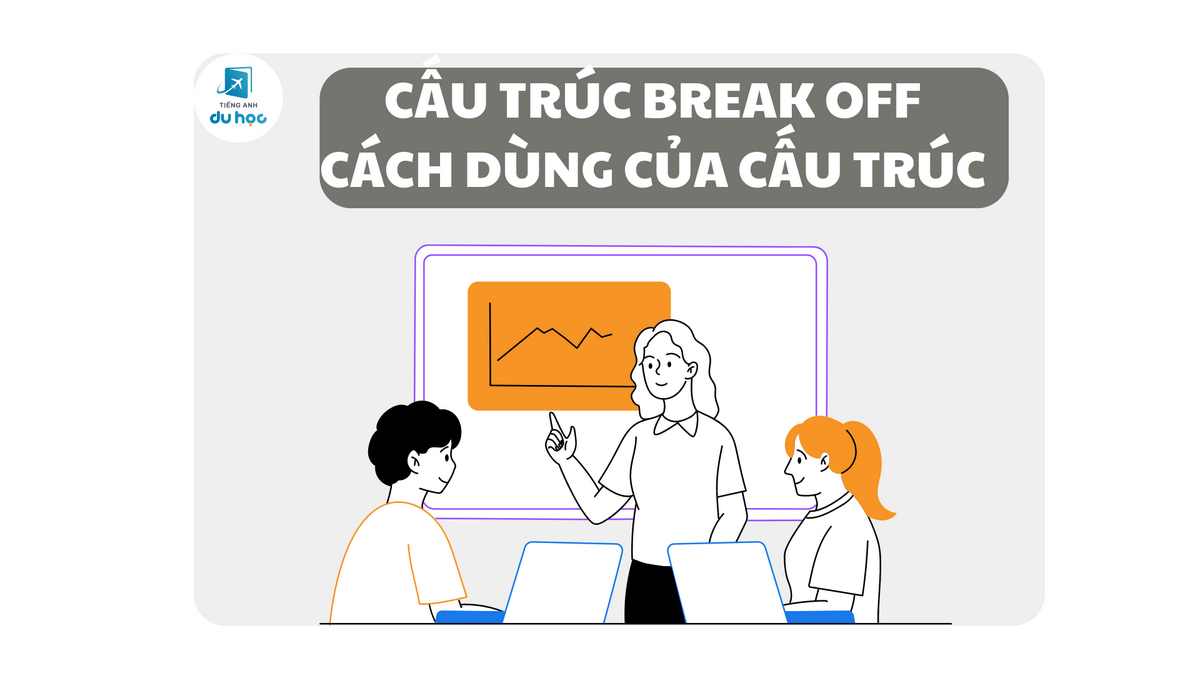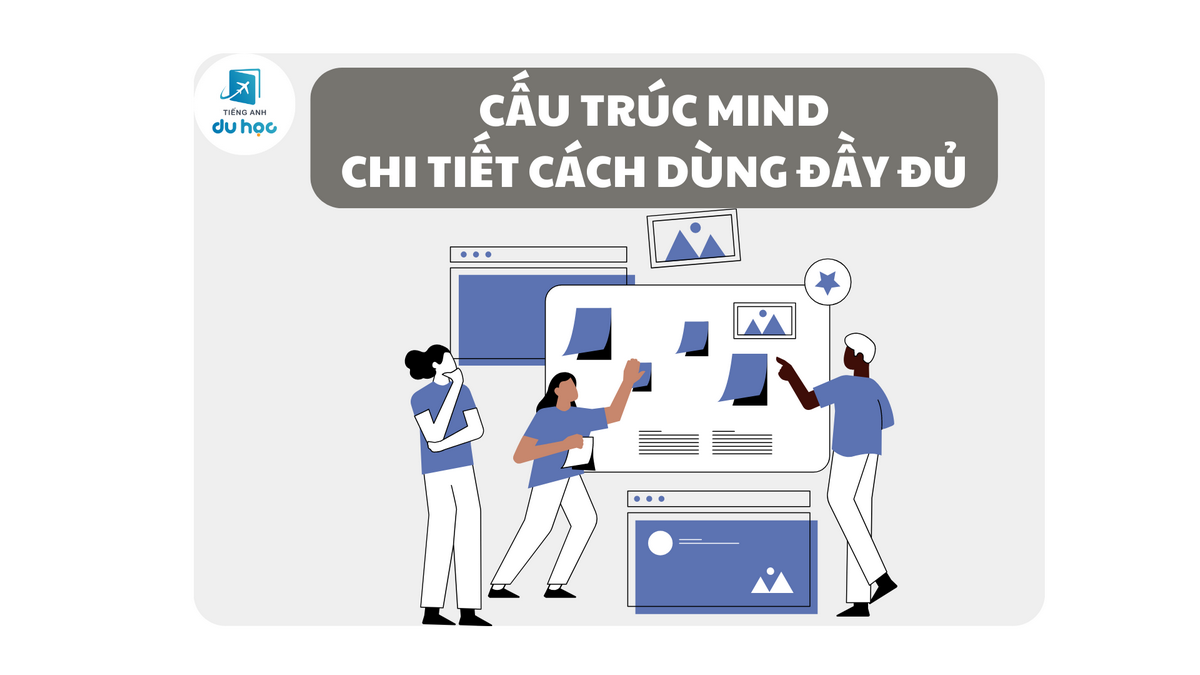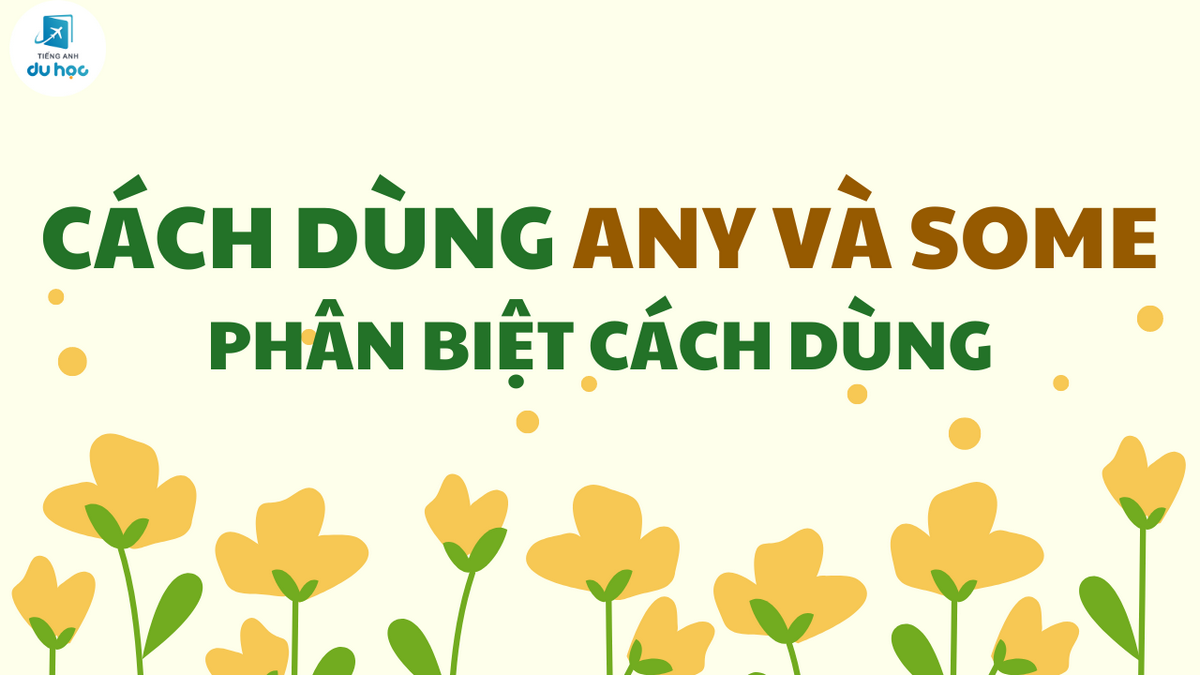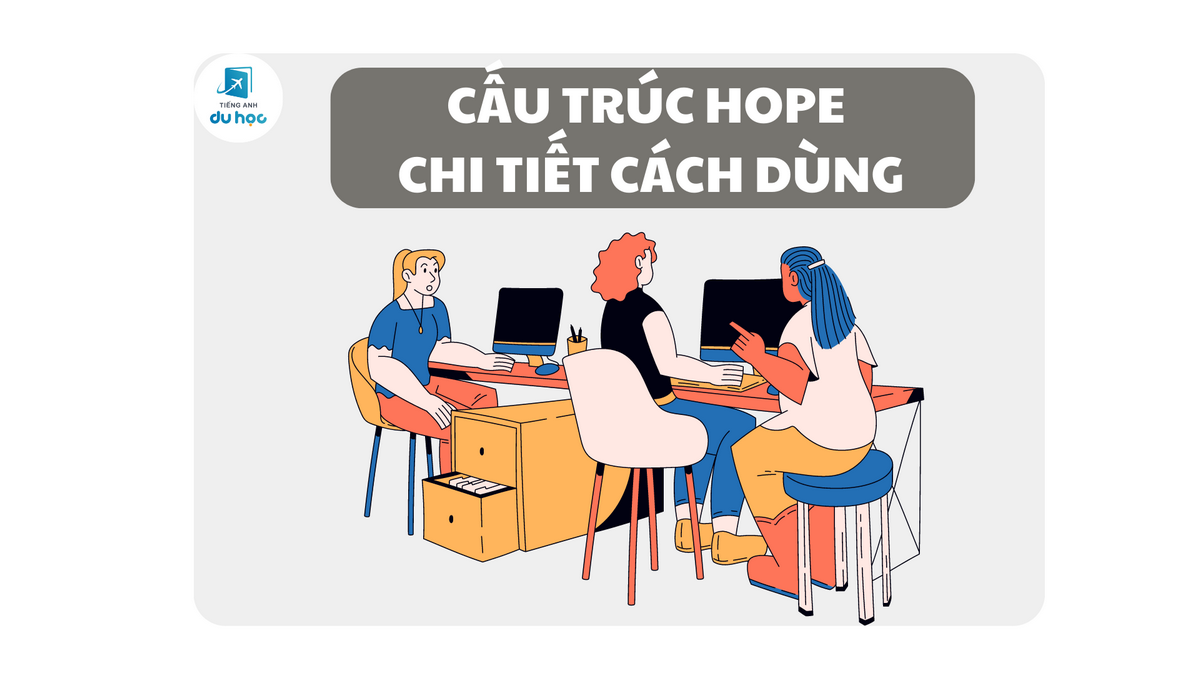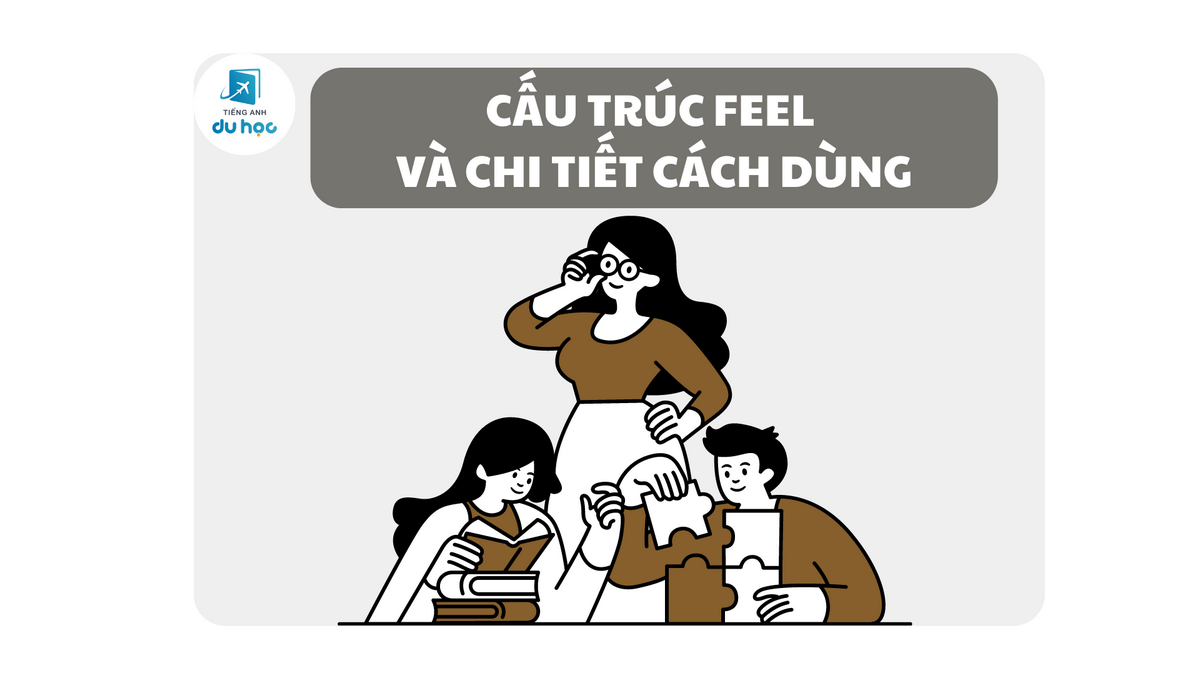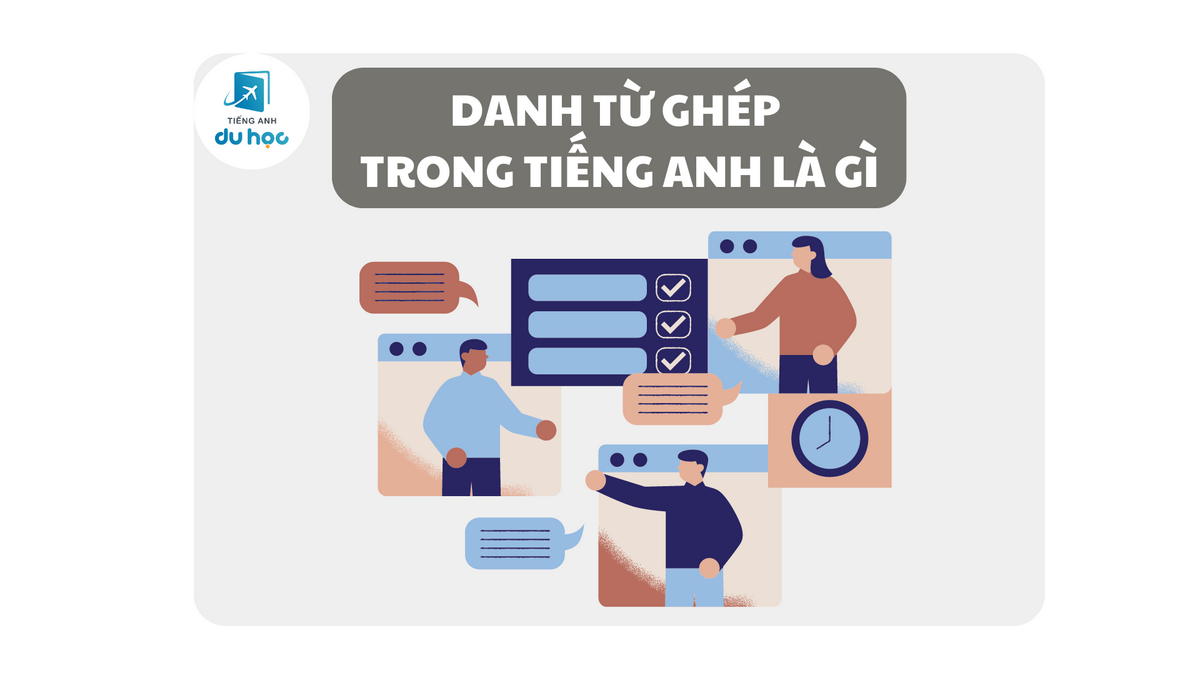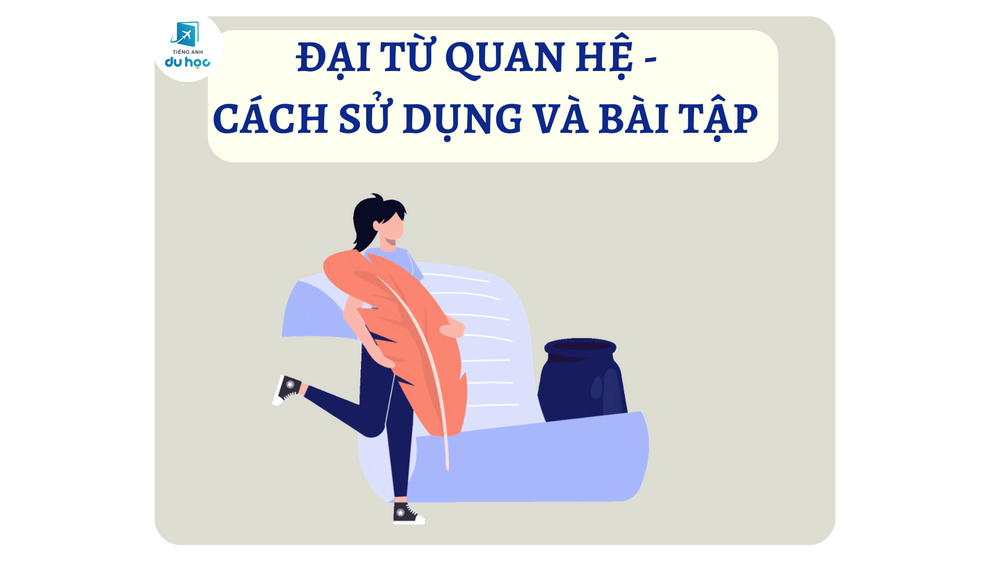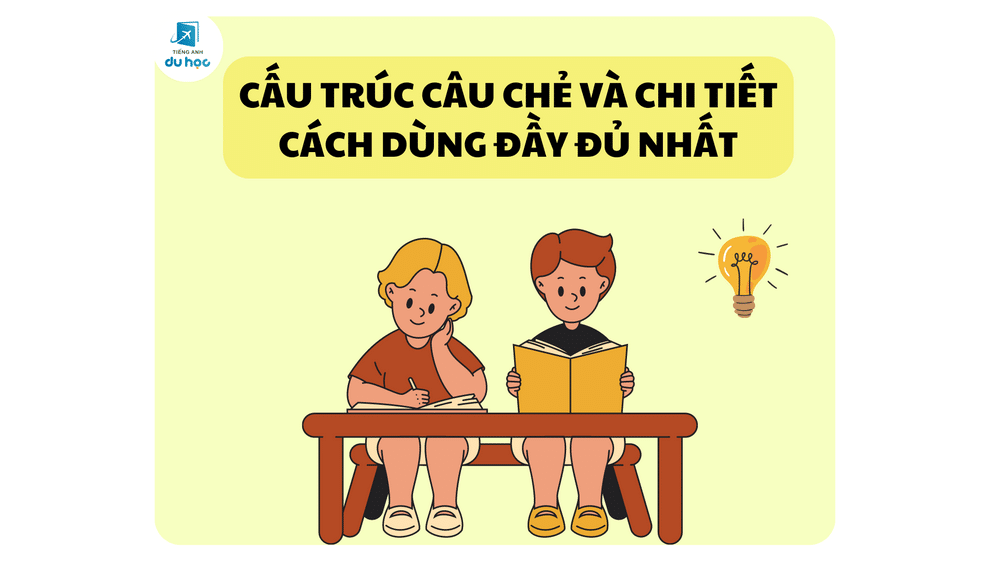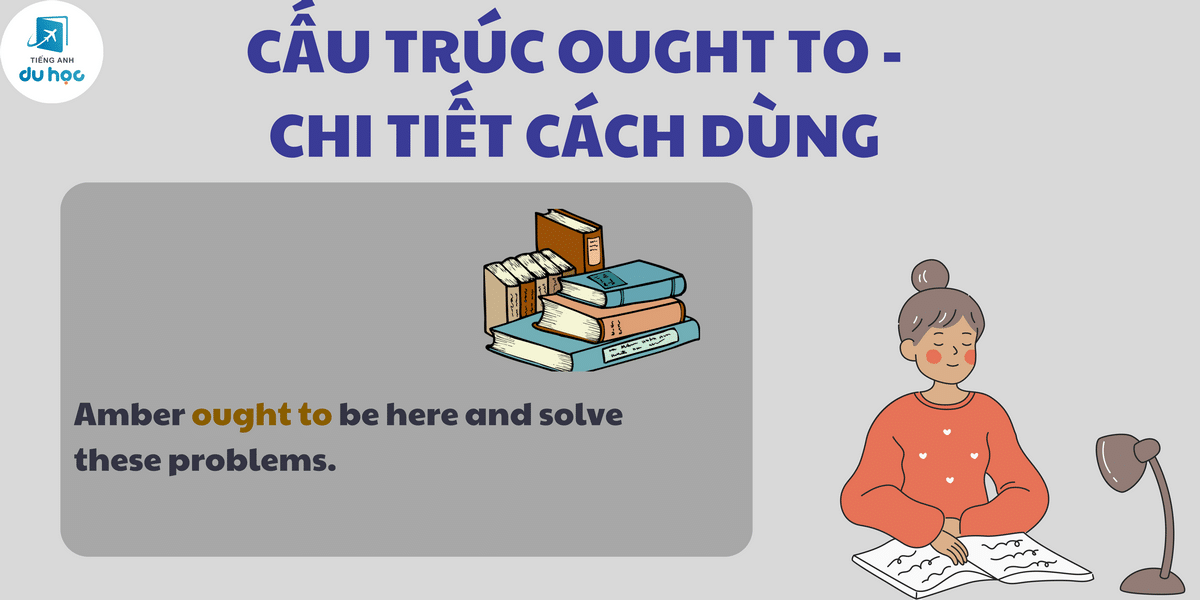Công thức ứng dụng chi tiết và bài tập câu trực tiếp – gián tiếp bên dưới đây sẽ giúp bạn học tập tốt hơn và dễ dàng ghi nhớ nhất.
Câu trực tiếp và câu gián tiếp là một phần ngữ pháp căn bản rất quan trọng trong Tiếng Anh và xuất hiện nhiều trong đề thi. Vậy Câu trực tiếp – gián tiếp hay là gì? Cách làm bài tập dạng câu trực tiếp – gián tiếp như thế nào?
Hãy cùng Tienganhduhoc.vn giải đáp câu hỏi câu trực tiếp và câu gián tiếp trong Tiếng Anh là gì và cách áp dụng vào bài tập cụ thể sao cho linh hoạt nhé!
Khái niệm – công thức câu trực tiếp/ gián tiếp
Câu tường thuật là câu thuật lại lời nói trực tiếp.
- Lời nói trực tiếp (direct speech): là nói chính xác điều ai đó diễn đạt (còn gọi là trích dẫn). Lời của người nói sẽ được đặt trong dấu ngoặc kép.
Ví dụ: She said ,” The exam is difficult”. “The exam is difficult” là lời nói trực tiếp hay câu trực ti
- Lời nói gián tiếp – câu tường thuật (indirect speech): Là thuật lại lời nói của một người khác dưới dạng gián tiếp, không dùng dấu ngoặc kép.
Ví dụ: Hoa said,”I want to go home” -> Hoa said she wanted to go home là câu gián tiếp (indirect speech)
- ‘Say’ and ‘tell’
Sử dụng ‘Say’ khi không có đối tượng gián tiếp:
He said that he was tired.
Luôn luôn sử dụng ‘tell’ khi bạn nói ai đang được nói chuyện (nghĩa là với một đối tượng gián tiếp):
John told me she likes football.
- ‘Talk’ and ‘speak’:
Sử dụng các động từ này để mô tả hành động giao tiếp:
He talked to us. She was speaking on the telephone.
Sử dụng các động từ này với ‘about’ để chỉ những gì đã nói:
He talked (to us) about his parents.
Cách chuyển câu trực tiếp sang câu gián tiếp
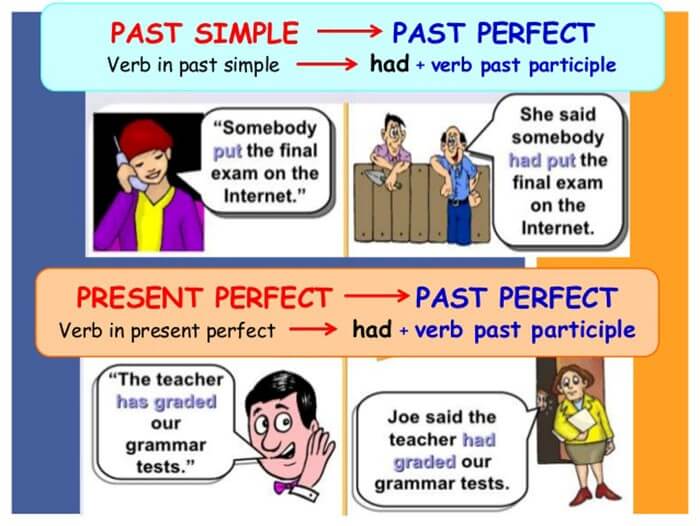
Để chuyển câu trực tiếp sang gián tiếp thì bạn chỉ cần ghép nội dung tường thuật vào phía sau câu nói, lùi thì của động từ xuống 1 cấp quá khứ, đại từ sẽ chuyển đổi linh hoạt.
- Thay đổi thời gian và địa điểm
Thời gian và địa điểm thường phải thay đổi khi chuyển từ câu trực tiếp sang gián tiếp.
| Cụm từ trong lời nói trực tiếp (Phrase in direct speech) | Tương đương trong câu gián tiếp (Equivalent in reported speech) |
| today | that day |
| “I saw him today“, she said. | She said that she had seen him that day. |
| yesterday | the day before |
| “I saw him yesterday“, she said. | She said that she had seen him the day before. |
| The day before yesterday | two days before |
| “I met her the day before yesterday“, he said. | He said that he had met her two days before. |
| Tomorrow | the next/following day |
| “I’ll see you tomorrow“, he said | He said that he would see me the next day. |
| The day after tomorrow | in two days time/ two days later |
| “We’ll come the day after tomorrow“, they said. | They said that they would come in two days’ time/ two days later. |
| Next week/month/year | the following week/month/year |
| “I have an appointment next week“, she said. | She said that she had an appointment the following week. |
| Last week/month/year | the previous/week/month/year |
| “I was on holiday last week“, he told us. | He told us that he had been on holiday the previous week. |
| ago | before |
| “I saw her a week ago,” he said. | He said he had seen her a week before. |
| this (for time) | that |
| “I’m getting a new car this week“, she said. | She said she was getting a new car that week. |
| this/that (adjectives) | the |
| “Do you like this shirt?” he asked | He asked if I liked the shirt. |
| here | there |
| He said, “I live here“. | He told me he lived there. |
Lưu ý: đại từ nhân xưng thay đổi thành số ít hoặc số nhiều của ngôi thứ ba, ngoại trừ khi người nói tường thuật bằng ngôn ngữ của họ:
He said: “I like your new car.” = He told her that he liked her new car.
I said: “I’m going to my friend’s house.” = I said that I was going to my friend’s house.
- Thay đổi thì(tense) khi sử dụng câu gián tiếp:
Nếu động từ tường thuật (reporting verb) của câu ở thì quá khứ thì phải lùi động từ chính về quá khứ một bậc khi chuyển từ lời nói trực tiếp (direct speech) sang lời nói gián tiếp (indirect / reported speech) theo quy tắc sau:
| Câu trực tiếp | Câu gián tiếp |
| Simple present | Simple past |
| “I always drink coffee”, she said | She said that she always drank coffee. |
| Present continuous | Past continuous |
| “I am reading a book”, he explained. | He explained that he was reading a book |
| Simple past | Past perfect |
| “Bill arrived on Saturday”, he said. | He said that Bill had arrived on Saturday. |
| Present perfect | Past perfect |
| “I have been to Spain”, he told me. | He told me that he had been to Spain. |
| Past perfect | Past perfect |
| “I had just turned out the light,” he explained. | He explained that he had just turned out the light. |
| Present perfect continuous | Past perfect continuous |
| They complained, “We have been waiting for hours”. | They complained that they had been waiting for hours. |
| Past continuous | Past perfect continuous |
| “We were living in Paris”, they told me. | They told me that they had been living in Paris. |
| Future | Present conditional |
| “I will be in Geneva on Monday”, he said. | He said that he would be in Geneva on Monday. |
| Future continuous | Conditional continuous |
| She said, “I’ll be using the car next Friday”. | She said that she would be using the car next Friday. |
*Lưu ý: Bạn không cần thay đổi thì nếu động từ tường thuật ở hiện tại hoặc nếu tuyên bố ban đầu là về một điều gì đó vẫn đúng, ví dụ:
He says he has missed the train but he’ll catch the next one.
We explained that it is very difficult to find our house.
Những động từ khiếm khuyết này không thay đổi trong lời nói gián tiếp: might, could, would, should, ought to:
We explained, “It could be difficult to find our house.” = We explained that it could be difficult to find our house.
She said, “I might bring a friend to the party.” = She said that she might bring a friend to the party.
- Biến đổi đại từ và các từ hạn định theo bảng sau:
| Câu trực tiếp | Câu gián tiếp | |
| Chủ ngữ | I | he/ she |
| You | I/ We/ They | |
| We | We/ They | |
| Tân ngữ | me | him/ her |
| you | me/ us/ them | |
| us | us/ them | |
| Đại từ sở hữu | my | his/ her |
| your | my/ our/ their | |
| our | our/ their | |
| Đại từ sở hữu | mine | his/ hers |
| yours | mine/ ours/ theirs | |
| ours | ours/ theirs | |
| Đại từ chỉ định | this | the/ that |
| these | the/ those |
Dạng câu hỏi câu gián tiếp
- Trật tự từ
Thông thường thứ tự từ được sử dụng trong các câu hỏi được tường thuật, đó là chủ từ đứng trước động từ và không cần thiết phải sử dụng ‘do’ hoặc ‘did’:
Examples
| Direct speech | Indirect speech |
| “Where does Peter live?” | She asked him where Peter lived. |
| “Where are you going?” | She asked where I was going. |
| “Why is she crying?” | He asked why she was crying. |
- Yes / no questions:
Loại câu hỏi này được chuyển sang dạng được tường thuật bằng cách sử dụng ‘ask’ + ‘if / whether’ + mệnh đề:
Examples
| Direct speech | Indirect speech |
| “Do you speak English?” | He asked me if I spoke English. |
| “Are you British or American?” | He asked me whether I was British or American. |
| “Is it raining?” | She asked if it was raining. |
| “Have you got a computer?” | He wanted to know whether I had a computer. |
| “Can you type?” | She asked if I could type. |
| “Did you come by train?” | He enquired whether I had come by train. |
| “Have you been to Bristol before?” | She asked if I had been to Bristol before. |
- Từ đặt câu hỏi:
Loại câu hỏi này được chuyển sang dạng được tường thuật bằng cách sử dụng ‘ask’ (hoặc động từ khác như ‘ask’) + từ đặt câu hỏi + mệnh đề. Mệnh đề chứa câu hỏi, theo thứ tự từ thông thường và với sự thay đổi thì cần thiết:
Examples
| Câu trực tiếp | Câu gián tiếp |
| “What is your name?” he asked me. | He asked me what my name was. |
| “How old is your mother?”, he asked. | He asked how old her mother was. |
| The policeman said to the boy, “Where do you live?” | The policeman asked the boy where he lived. |
| “What time does the train arrive?” she asked. | She asked what time the train arrived. |
| “When can we have dinner?” she asked. | She asked when they could have dinner. |
| Peter said to John, “Why are you so late?” | Peter asked John why he was so late. |
Câu tường thuật gián tiếp
Câu tường thuật gián tiếp : mệnh lệnh, yêu cầu, đề nghị(orders, requests & suggestions)
- Tường thuật gián tiếp mệnh lệnh và yêu cầu:
Khi chúng ta muốn tường thuật gián tiếp một mệnh lệnh hoặc yêu cầu, chúng ta có thể sử dụng một động từ như ‘tell’ với một mệnh đề -to: He told me to go away.
Mẫu câu: động từ + túc từ gián tiếp + mệnh đề -to. Túc từ gián tiếp là người được nói đến.
Các động từ khác được sử dụng để tường thuật gián tiếp các mệnh lệnh và yêu cầu theo cách này là: command, order, warn, ask, advise, invite, beg, teach, & forbid.
Examples
| Câu trực tiếp | Câu gián tiếp |
| The doctor said to me, “Stop smoking!”. | The doctor told me to stop smoking. |
| “Get out of the car!” said the policeman. | The policeman ordered him to get out of the car. |
| “Could you please be quiet,” she said. | She asked me to be quiet. |
| The man with the gun said to us, “Don’t move!” | The man with the gun warned us not to move. |
Túc từ yêu cầu for:
Túc từ yêu cầu for trong câu tường thuật dùng mẫu câu “asked for” + túc từ.
Examples
| Câu trực tiếp | Câu gián tiếp |
| “Can I have an apple?”, she asked. | She asked for an apple. |
| “Can I have a newspaper, please?” | He asked for the newspaper. |
| “May I have a glass of water?” he said. | He asked for a glass of water. |
| “Sugar, please.” | She asked for the sugar. |
| “Could I have three kilos of onions?” | He asked for three kilos of onions. |
- Sự đề nghị
Sử dụng những động từ như suggest, insist, recommend, demand, request, và propose theo sau mệnh đề -that.
Examples
| Câu trực tiếp | Câu gián tiếp |
| She said, “Why don’t you get a mechanic to look at the car?” | She suggested that I should get a mechanic to look at the car. OR She suggested I should get a mechanic to look at the car. OR She suggested that I get a mechanic to look at the car.OR She suggested I get a mechanic to look at the car. |
| “Why don’t you go to the doctor?” he said. | He suggested I go to the doctor. OR He suggested that I go to the doctor. OR He suggested I should go to the doctor.OR He suggested that I should go to the doctor. |
| “It would be a good idea to see the dentist”, said my mother. | My mother suggested I see the dentist. |
| The dentist said, “I think you should use a different toothbrush”. | The dentist recommended using a different toothbrush. |
| You said, “I don’t think you have time to see the dentist this week.” | You suggested postponing my visit to the dentist. |
| I said, “I don’t think you should see the dentist this week.” | I suggested postponing your visit to the dentist. |
| My manager said, “I think we should examine the budget carefully at this meeting.” | My manager proposed that we examine the budget carefully at the meeting. |
| “Why don’t you sleep overnight at my house?” she said. | She suggested that I sleep overnight at her house. |
- Lời cảnh báo, xin lỗi
Chúng ta có thể thuật lại các loại câu này bằng cách dùng “say” , “ask”, hoặc chúng ta có thể sử dụng offer, warn, apologize v.v.
“I can lend you some money.” (“Tôi có thể cho bạn mượn ít tiền được không.”)
Sue offered to lend me some money. (Sue đề nghị cho tôi mượn ít tiền.)
Sue said she could lend me some money. (Sue nói cô ấy có thể cho tôi mượn ít tiền.)
Động từ tường thuật
Một số động từ tường thuật phổ biến là: tell (bảo), ask (yêu cầu, hỏi), encourage (động viên), want (muốn), advise (khuyên), agree (đồng ý), invite (mời), remind (nhắc nhở), promise (hứa), warn (cảnh báo),…
Trên đây là tổng hợp Công thức ứng dụng chi tiết cho câu trực tiếp- gián tiếp.
Bài tập câu trực tiếp – gián tiếp
Bài 1: Hoàn thành các câu sau
1. “Where is my umbrella?” she asked.
She asked……………………………………… ………………….
2. “How are you?” Martin asked us.
Martin asked us………………………………………… ……………….
3. He asked, “Do I have to do it?”
He asked……………………………………… ………………….
4. “Where have you been?” the mother asked her daughter.
The mother asked her daughter…………………………………… …………………….
5. “Which dress do you like best?” she asked her boyfriend.
She asked her boyfriend………………………………….. ……………………..
6. “What are they doing?” she asked.
She wanted to know………………………………………. …………………
7. “Are you going to the cinema?” he asked me.
He wanted to know………………………………………. …………………
8. The teacher asked, “Who speaks English?”
The teacher wanted to know………………………………………. …………………
9. “How do you know that?” she asked me.
She asked me………………………………………… ……………….
10. “Has Caron talked to Kevin?” my friend asked me.
My friend asked me………………………………………… ……………….
11. “What’s the time?” he asked.
→ He wanted to know ……………………………………………
12. “When will we meet again?” she asked me.
→ She asked me ……………………………………………
13. “Are you crazy?” she asked him.
→ She asked him ……………………………………………
14. “Where did they live?” he asked.
→ He wanted to know ……………………………………………
15. “Will you be at the party?” he asked her.
→ He asked her ……………………………………………
16. “Can you meet me at the station?” she asked me.
→ She asked me ……………………………………………
17. “Who knows the answer?” the teacher asked.
→ The teacher wanted to know ……………………………………………
18. “Why don’t you help me?” she asked him.
→ She wanted to know ……………………………………………
19. “Did you see that car?” he asked me.
→ He asked me ……………………………………………
20. “Have you tidied up your room?” the mother asked the twins.
→ The mother asked the twins …………………………………………..
Bài 2: Bài tập câu tường thuật pha trộn negative và positive
1. She said, “Go upstairs.”
→ She told me ……………………………………………
2. “Close the door behind you,” he told me.
→ He told me ……………………………………………
3. “Don’t be late,” he advised us.
→ He advised us ……………………………………………
4. “Stop staring at me,” she said.
→ She told him ……………………………………………
5. “Don’t be angry with me,” he said.
→ He asked her ……………………………………………
6. “Leave me alone,” she said.
→ She told me ……………………………………………
7. “Don’t drink and drive,” she warned us.
→ She warned us ……………………………………………
8. “John, stop smoking,” she said.
→ She told John ……………………………………………
9. “Don’t worry about us,” they said.
→ They told her ……………………………………………
10. “Meet me at the cinema.” he said.
→ He asked me ……………………………………………
11. He said, “I like this song.”
→ He said ……………………………………………
12. “Where is your sister?” she asked me.
→ She asked me ……………………………………………
13. “I don’t speak Italian,” she said.
→ She said ……………………………………………
14. “Say hello to Jim,” they said.
→ They asked me ……………………………………………
15. “The film began at seven o’clock,” he said.
→ He said that ……………………………………………
16. “Don’t play on the grass, boys,” she said.
→ She told ……………………………………………
17. “Where have you spent your money?” she asked him.
→ She asked him ……………………………………………
18. “I never make mistakes,” he said.
→ He said ……………………………………………
19. “Does she know Robert?” he wanted to know.
→ He wanted ……………………………………………
20. “Don’t try this at home,” the stuntman told the audience.
→ The stuntman advised ……………………………………………
Đáp án bài tập
Bài 1: Đáp án – Hoàn thành các câu
- She asked me where her umbrella was.
- Martin asked us how we were.
- He asked if he had to do it.
- The mother asked her daughter where she had been.
- She asked her boyfriend which dress he liked best.
- She wanted to know what they were doing.
- He wanted to know if I was going to the cinema.
- The teacher wanted to know who spoke English.
- She asked me how I knew that.
- My friend asked me if Caron had talked to Kevin.
- He wanted to know what time it was.
- She asked me when we would meet again.
- She asked him if he was crazy.
- He wanted to know where they had lived.
- He asked her if she would be at the party.
- She asked me if I could meet her at the station.
- The teacher wanted to know who knew the answer.
- She wanted to know why he didn’t help her.
- He asked me if I had seen that car.
- The mother asked the twins if they had tidied up their room.
Bài 2: Đáp án – bài tập câu tường thuật pha trộn negative và positive
- She told me to go upstairs.
- He told me to close the door behind me.
- He advised us not to be late.
- She told him to stop staring at her.
- He asked her not to be angry with him.
- She told me to leave her alone.
- She warned us not to drink and drive.
- She told John to stop smoking.
- They told her not to worry about them.
- He asked me to meet him at the cinema.
- He said that he liked that song.
- She asked me where my sister was.
- She said that she didn’t speak Italian.
- They asked me to say hello to Jim.
- He said that the film began at seven o’clock.
- She told the boys not to play on the grass.
- She asked him where he had spent his money.
- He said that he never made mistakes.
- He wanted to know if she knew Robert.
- The stuntman advised the audience not to try that at home.
Hi vọng rằng với các kiến thức mà Tienganhduhoc.vn cung cấp bên trên, các bạn hoàn toàn có thể làm chủ kiến thức về câu gián tiếp và trực tiếp trong tiếng anh. Chúc các bạn học tốt nhé!


